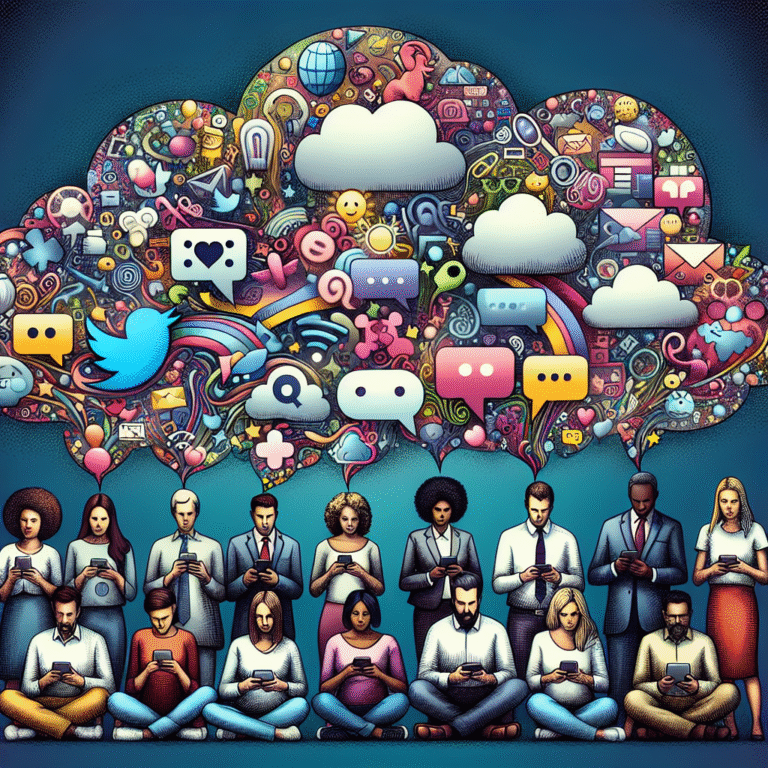
Introduction
In today’s hyper-connected world, the power of social influence is more potent and pervasive than ever before. From social media trends that can change consumer behavior overnight to grassroots movements that drive policy changes, understanding the dynamics of social influence is essential for individuals, marketers, leaders, and activists alike. The Ripple Effect: Understanding the Dynamics of Social Influence is not just an academic topic; it is a real-world phenomenon that shapes our choices, beliefs, and actions every day.
Just imagine standing at the edge of a serene lake and tossing a small stone into the water. The ripples that emanate from that single disruption can go on to touch every corner of the lake. Similarly, small actions or opinions can create far-reaching impacts on community beliefs and behaviors. In this article, we will delve deep into these dynamics, exploring case studies, real-world applications, and actionable insights that reveal the true potential of social influence in our lives.
The Science of Social Influence
Social influence refers to the ways in which individuals change their thoughts, feelings, or behaviors as a result of the actions of others. This influence can be both direct—such as a friend persuading another to buy a particular product—and indirect, as in the case of societal norms shaping what is considered acceptable or desirable. The field draws from psychology, sociology, and behavioral economics, providing a robust framework for understanding this ripple effect.
1. Types of Social Influence
Understanding The Ripple Effect: Understanding the Dynamics of Social Influence begins with recognizing the different types of influence we encounter daily. These include:
- Normative Influence: Conforming to fit in with the group. For instance, you might wear a particular brand to align with your peers.
- Informational Influence: Adopting behaviors or beliefs because you believe others possess reliable information. For example, if someone you trust recommends a movie, you are more likely to watch it.
- Obedience: Following orders from an authoritative figure, which has significant implications in settings like the workplace or in military contexts.
2. The Role of Social Proof
One of the key mechanisms of social influence is social proof—the idea that individuals will conform to what they believe others are doing. This is particularly pronounced in online environments, where reviews and testimonials can significantly affect purchasing decisions. Research indicates that 70% of consumers are influenced by online peer reviews.
Case Study: Yelp and Restaurant Choices
A classic example of social proof in action is Yelp, the restaurant review site. A restaurant with a higher rating will likely attract more customers, regardless of the actual quality of the food. This cumulative influence—whereby the actions of previous customers ripple through the community—illustrates the profound impact of social proof.
Analysis:
The Yelp effect demonstrates how businesses can leverage peer recommendations. In the digital age, consumers rely on the experiences of others to make informed choices.
3. The Power of Networks
Human interactions are rarely random; they follow structured networks. Understanding these networks and their dynamics can help unveil how information and behaviors spread through communities.
Table 1: Types of Networks in Social Influence
| Network Type | Description | Example |
|---|---|---|
| Egalitarian | Everyone has equal influence | Small friend groups |
| Hierarchical | Clear lines of authority | Corporate structures |
| Decentralized | Influence exists across multiple nodes | Social media platforms |
4. The Emotional Component
Beyond mere behavior is the emotional element that fuels social influence. Neuroscientific studies have shown that we are wired to feel empathy and camaraderie, causing us to mirror the emotions of those around us.
Case Study: Viral Social Media Campaigns
A compelling example of this is the ‘Ice Bucket Challenge’, which raised over $115 million for ALS research. People felt an emotional connection to both the cause and the fun associated with the challenge. This emotional engagement triggered widespread participation, illustrating The Ripple Effect: Understanding the Dynamics of Social Influence in action.
Analysis:
The emotional connection generated through this campaign not only influenced individual behaviors but sparked a global movement, exemplifying how empathy can catalyze widespread action.
5. The Role of Visualization in Persuasion
The Ripple Effect: Understanding the Dynamics of Social Influence can also be enhanced through the use of visual communication. We often gravitate toward visual stimuli because they simplify complex information. For instance, infographics can distort our perceptions, making us more susceptible to persuasion.
Chart 1: Impact of Different Visuals on Persuasiveness
| Visual Type | Persuasiveness Rating (%) |
|---|---|
| Simple Infographic | 85% |
| Text Alone | 50% |
| Video Content | 75% |
6. Replication and Innovation
One of the most fascinating aspects of social influence is the balance between replication (copying behaviors) and innovation (creating new behaviors). As individuals observe how others act and react, they often choose to either replicate those successful behaviors or adapt them into something unique.
Case Study: TikTok Trends
Consider the TikTok platform, where dances and challenges proliferate through viral videos. Users replicate popular trends while simultaneously adding their personal flair, showcasing how influences evolve within digital spaces.
Analysis:
TikTok exemplifies the dynamic interplay between influence and creativity, revealing how social media can accelerate the spread of ideas while allowing for personal expression.
Conclusion
The Ripple Effect: Understanding the Dynamics of Social Influence reveals the profound yet often unseen forces shaping our daily interactions. Whether you’re a marketer aiming to leverage social proof or a leader trying to inspire your team, recognizing the nuances of social influence can enhance your strategies and decision-making.
As we embrace the interconnectedness of our behaviors and beliefs, we harness the potential to create positive change. Whether by initiating small ripples in our communities or scaling that influence to larger networks, we can all be architects of a more connected, empathetic world.
FAQs
1. What is social influence?
Social influence occurs when an individual’s thoughts, feelings, or behaviors are affected by the actions and opinions of others.
2. How does social proof impact decisions?
Social proof leads people to conform to the actions of others based on the belief that those actions are correct or desirable, greatly affecting consumer behavior.
3. Can social influence be both positive and negative?
Absolutely. While social influence can promote beneficial behaviors, it can also lead to harmful decisions, like participating in risky activities due to peer pressure.
4. How can I leverage social influence in marketing?
Marketers can use testimonials, user-generated content, and social media influencers to establish social proof and credibility, encouraging consumers to engage with their brand.
5. Is social influence more potent in small groups or large crowds?
It depends on the context. Small groups often allow for stronger emotional bonds, while larger crowds can generate broader social proof. Ultimately, both formats have unique strengths.
By understanding these dynamics, we empower ourselves to enact change and positively influence others, creating a beneficial ripple effect throughout our lives.

















